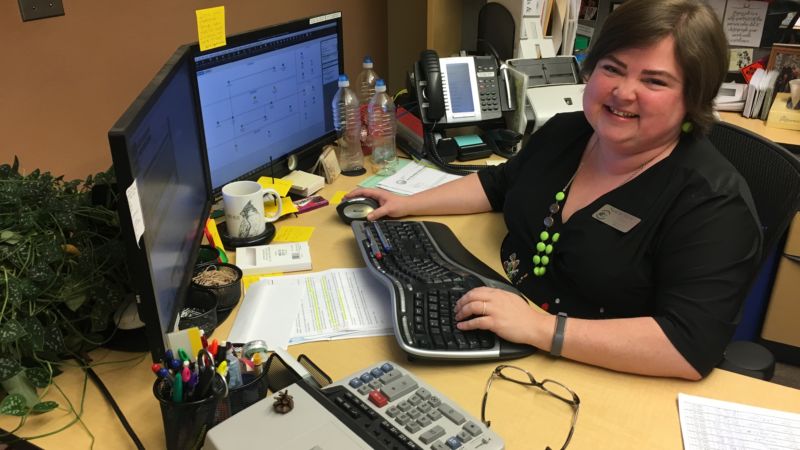“I’m one of those people who likes to understand the why as much as the how something works,” admits Natalie Marx, chief deputy treasurer for Douglas County, Washington. It’s that determined curiosity that has made Marx a “power user” among Thomson Reuters T2 users.
“Douglas County is one of those counties that utilizes the T2 application and the tools embedded in the software a lot more broadly because the treasurer’s office does more than just property taxes. In fact, T2 is utilized for almost all of the receipts that come into their office,” explains Karen Bratton, lead applications support analyst at Thomson Reuters.
“We actually use the general ledger (GL) side of the software, and are one of the few counties that do,” Marx adds. “We use it, obviously, to provide tax payers with information, but also to answer questions from our junior taxing districts and special-purpose districts when they’re looking for balance information or want to know where revenues came from. We use the software in its entirety every day.”
Working efficiently with less staff
Douglas County’s embrace of T2 has been sparked by a scenario many counties are experiencing.
“We have a small staff, so we need to be able to get the most out of the software,” Marx says. “If you understand how the reports work and how to query, you can access the information you need to better serve your customers—both internal and external. Knowing the ins-and-outs of the software helps locate the best information in the most efficient way.”
Because the treasurer’s department shares the software with other county departments, Marx has learned that good communication keeps things running smoothly for everyone.
“It’s not uncommon for departments to be territorial or at odds with each other, but we’re fortunate to have a really good working relationship with other departments—especially our assessor’s office,” explains Marx. “To ensure that things work as best they can, we also keep our IT staff in the loop. That way, if we have any issues, they have a good understanding of the software and we can troubleshoot internally.”
“One of the things I appreciate about Natalie as a support representative is that I know when she brings an issue to me she has tried her best to resolve the issue—whether its data integrity or queries or reports,” add Bratton. “She’s used the tools in the application to research and try to understand what went wrong, where it went wrong and tried to resolve the issue.”
“I want to be respectful of people’s time,” Marx explains. “I want to make sure I’m not wasting resources by asking the support staff to fix something that I could have fixed had I spent a few more minutes looking at the issue.”
Helping shape future development
Marx continues to boost Douglas County’s T2 knowledge base by attending regular “espresso” training sessions and sends staffers—including members of the IT team—to regional user group conferences. Her commitment to expanding her expertise has made Marx a respected influencer among the T2 community. Not only has she been instrumental in leading training sessions across Washington, but she provides valuable input on T2 system documentation and serves on the Thomson Reuters customer advisory board.
“A lot of ideas come out of user group,” says Marx. “The difficulty can be determining what’s most important? Does an idea benefit one county or multiple counties? Often, implementation can be slowed unless there’s consensus about what should be done first. When Thomson Reuters came up with the idea of the advisory council, I thought it was a fantastic idea because it takes ideas from user group to a group of peers who narrow down the focus for Thomson Reuters.”
Enhancements that benefit everyone
The benefits of collaboration between Thomson Reuters and the advisory council are certainly evident in the additional functionality featured in T2.
“I really appreciate the additional reports that are available to us now,” says Marx. “We’re able enter a lot more data, a lot more details. The more information we’re able to input on our end, the more information we’re going to get out. The reporting, especially, has been really helpful and lets us get better information out to people. For Douglas County, it makes such a difference that we can work with people we can trust and know will take time to listen and understand our needs. Thomson Reuters has been really great to work with—both the support side and the development side. It’s wonderful to have that kind of relationship with a vendor because it’s not something we usually enjoy. Thomson Reuters is the exception.”
T2 Troubleshooting Tips
As a robust “power user” who puts T2 through its paces on a daily basis, Natalie Marx offers these best practices trouble-shooting tips to other users:
Understand how the queries work. “Doing so can help you find so much information. Yet, I think a lot of people don’t understand the different query views and how they work,” says Marx. “Queries is the feature I use the most.”
Familiarize yourself with the different reports. Take time to look at the different reports offered and the kind of information that they provide.
Determine where information is coming from. “I ask a lot of questions about where information comes from,” Marx says. “When you’re looking at a report, determine whether it is reflecting receipting data or distribution information. If you know where information comes from and you know what’s happening in the background, it helps you understand where to look for things when you’re having trouble balancing or have other issues.”
Drama-free Conversion
“Conversion was really a very smooth transition,” says Marx. “We ended up converting mid-month—which initially wasn’t the plan—but it ended up falling that way. In retrospect, it ended up being great. We did double entry for the last two weeks of the month after we converted just to ensure that everything captured was keyed into T1 and T2. At the end of the month we ran reports to a second verification of balances and it worked fantastic.
“The report preview process that Thomson Reuters provided was phenomenal. It allowed us to compare balances and the way reports were lining up before we moved ahead. Thomson Reuters gave us a lot of information on how to clean up certain data, along with advice about how much data to convert.”






